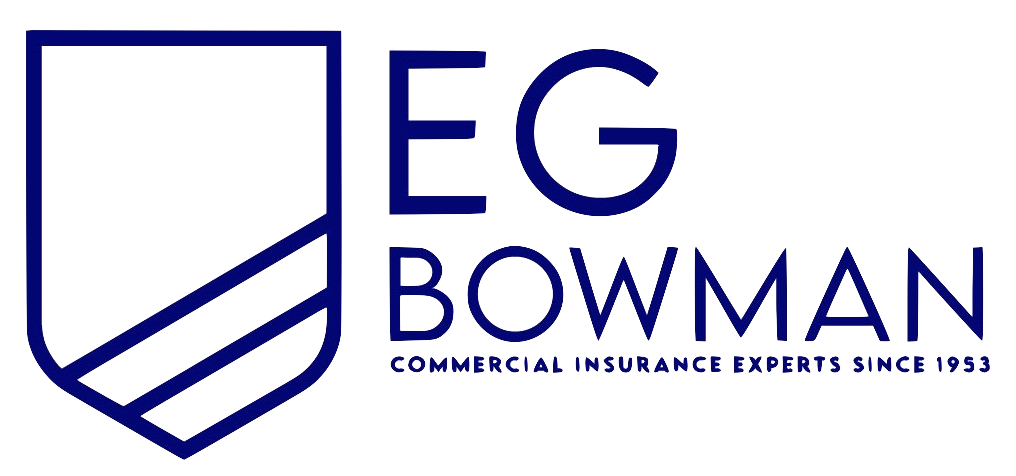New York Homeowners Association Insurance
See How We're Different:
or Call Us: 212-425-8150

Most Common Business Policies
Index
Understanding Homeowners Association Insurance
The Specifics of New York Homeowners Association Insurance
Choosing the Right Homeowners Association Insurance in New York
Frequently Asked Questions About New York Homeowners Association Insurance
Navigating Claims with Your Homeowners Association Insurance
Conclusion: Protecting Your New York Home with the Right Insurance
Contact Us
Homeowners association (HOA) insurance is a necessary aspect of managing a community's shared spaces and protecting its residents. For homeowners in New York, understanding the intricacies of HOA insurance can be critical to ensuring proper coverage and peace of mind. This comprehensive guide will delve into the essential details regarding homeowners association insurance, specifically within the context of New York state.
Understanding Homeowners Association Insurance
Homeowners association insurance is designed to provide coverage for common areas and shared property within a community. This insurance is typically purchased by the HOA itself and serves to protect the interests of both the association and its members.
The Basics of Homeowners Association Insurance
The fundamental coverage provided by homeowners association insurance primarily encompasses liability and property damage. In essence, it protects against damages that may occur in shared spaces, such as pools, parking lots, and landscape areas. Typically, two main types of policies exist: master policies, which cover the entire community, and individual unit policies that protect the owners’ personal investments.
The master policy can cover the exterior of buildings as well as communal amenities. Conversely, individual unit owners often need additional coverage to protect the interiors of their homes and personal property. This distinction is crucial for homeowners to understand as it directly impacts their insurance needs. For instance, while the master policy may cover damage caused by a storm to the roof of a building, it usually does not extend to personal belongings inside individual units, which is where personal policies come into play.
Why Homeowners Association Insurance is Important
A well-structured homeowners association insurance policy not only safeguards communal property but also fulfills legal requirements that may vary by state. Its importance lies in minimizing financial risks associated with litigation, accidents, and property damage.
Additionally, HOA insurance fosters a sense of security among homeowners. Knowing that liabilities related to shared spaces are under the protection of insurance allows members to enjoy their community without undue stress. Understanding the types and extent of coverage can serve to bolster community relations and provide clarity in decision-making during unfortunate events. Moreover, having robust insurance can enhance property values, as potential buyers often look favorably upon well-insured communities. This aspect can be particularly beneficial in competitive real estate markets, where the presence of a solid insurance policy can serve as a selling point for prospective homeowners.
Furthermore, it's essential for homeowners to actively participate in discussions regarding their HOA's insurance policies. Regular meetings and reviews of coverage can ensure that the policy evolves with the community's needs. For instance, as new amenities are added or as the community ages, the insurance coverage may need adjustments to adequately protect against emerging risks. Engaging in these discussions not only empowers homeowners but also fosters a collaborative spirit within the community, ensuring that everyone is aligned on the importance of protecting their shared assets.

The Specifics of New York Homeowners Association Insurance
New York homeowners face unique challenges and regulations in regard to homeowners association insurance. For those looking to navigate these waters, it's imperative to understand the specific requirements and options available in this state.
New York State Regulations for Homeowners Association Insurance
New York imposes specific laws that govern how homeowners associations operate and the type of insurance they must carry. The state mandates that HOAs maintain enough coverage to protect against liabilities arising from common areas. Importantly, the type and amount of required coverage can differ widely among communities.
Furthermore, associations must ensure compliance with any local laws and regulations that pertain to housing and construction. Familiarity with these regulations not only aids in securing appropriate insurance but also helps protect the association from potential legal issues. It's also crucial for HOAs to stay updated on any changes to state laws, as these can affect insurance requirements and liability considerations. Regular training sessions and consultations with legal experts can help board members remain informed and proactive in managing their insurance needs.
Common Coverage Options in New York
Generally, homeowners associations in New York have several coverage options available to them. These include but are not limited to:
- Property Damage Coverage: Protects against damages to common areas and amenities.
- General Liability Insurance: Covers injuries or accidents involving third parties in communal spaces.
- Directors and Officers Liability Insurance: Protects HOA board members from personal liability in legal disputes.
- Workers Compensation Insurance: Required if the HOA employs any staff.
Choosing the right combination of these options ensures comprehensive coverage that aligns with the community's needs. Additionally, many HOAs in New York are increasingly considering cyber liability insurance due to the rise in digital communications and online management tools. This type of coverage can protect against data breaches and other cyber threats, which are becoming more prevalent in today's technology-driven environment. Another emerging consideration is environmental liability insurance, particularly for communities located near bodies of water or in areas prone to natural disasters, as this can safeguard against claims related to pollution or property damage from environmental hazards.
Choosing the Right Homeowners Association Insurance in New York
With myriad choices available, selecting the best homeowners association insurance can be a daunting task for community managers and boards. Recognizing key factors and taking informed steps can lead to wiser decisions.
Factors to Consider When Choosing a Policy
When evaluating potential insurance policies, several factors should come into consideration:
- Coverage Scope: Ensure that the policy covers all necessary aspects, including liability and property damage.
- Premium Costs: Compare the pricing of different policies to determine what fits the community’s budget.
- Deductibles: Assess the deductibles associated with each policy, as they can significantly impact overall costs during claims.
- Insurer Reputation: Research the insurer's history of claims handling and customer service to ensure reliability.
When you weigh these elements, a clearer picture of which policy might suit the community's needs begins to emerge. Additionally, it’s important to consider the specific risks associated with the community's location. For instance, communities in flood-prone areas might require additional flood insurance, while those in regions susceptible to wildfires may need to look into enhanced fire coverage. Understanding these localized risks can help in tailoring the insurance policy to better protect the community.
Tips for Comparing Insurance Quotes
Obtaining multiple insurance quotes is a practical step toward finding the right coverage. Here are some tips to streamline this process:
- Gather detailed information about the community's assets, including common areas.
- Request quotes from several insurers and ensure they outline the same coverages for accurate comparison.
- Pay attention to exclusions and limitations that could affect coverage.
- Consult with fellow homeowners and members of the board for input regarding the choice of insurer.
By approaching the comparison process methodically, boards can make an informed choice that satisfies the community’s needs. Furthermore, it can be beneficial to engage an insurance broker who specializes in homeowners association policies. These professionals can provide valuable insights and help navigate the complexities of different policies, ensuring that all potential risks are adequately addressed. They can also assist in negotiating terms that might not be readily available to the average consumer, potentially leading to better coverage at a more favorable price.
Frequently Asked Questions About New York Homeowners Association Insurance
Many homeowners have questions when it comes to homeowners association insurance. This section addresses some of the most frequently asked inquiries to clarify any uncertainties.
What Does Homeowners Association Insurance Typically Cover?
Generally, homeowners association insurance covers:
- Liability for accidents or injuries that occur in common areas.
- Property damage to shared property such as pools, clubhouses, and landscaping.
- Legal fees associated with defending claims against the association.
However, it’s crucial for HOAs to review their specific policy details to understand the full scope of their coverage. Additionally, some policies may also include coverage for vandalism or theft that affects common areas, which can be particularly important in urban settings where such incidents may be more prevalent. It’s advisable for associations to conduct regular assessments of their property and potential risks to ensure they have adequate coverage for all possible scenarios.
How Much Does Homeowners Association Insurance Cost in New York?
The cost of homeowners association insurance varies significantly depending on several factors, including:
- The size and location of the community.
- The types of coverage included in the policy.
- The claims history of the HOA.
On average, HOAs in New York can expect to pay anywhere from a few thousand to several tens of thousands of dollars annually. It’s essential to budget appropriately for these expenses in order to maintain adequate coverage. Furthermore, many associations find it beneficial to shop around and compare quotes from multiple insurance providers to ensure they are getting the best value for their money. Engaging with an insurance broker who specializes in HOA coverage can also provide insights into potential discounts or tailored policies that meet the specific needs of the community.

When the need arises to file a claim, familiarity with the process can alleviate stress and ensure prompt responses. Here are the steps to take when a claim needs to be filed.
Steps to Filing a Claim
Filing a claim involves a few critical steps:
- Document the incident thoroughly, taking photos and gathering witness information as necessary.
- Notify the homeowners association and report the incident.
- Contact the insurance provider to initiate the claims process and provide them with required documentation.
Following these steps can lead to a smoother claims experience and quicker resolution of issues. It is also beneficial to keep a detailed record of all communications related to the claim, including dates, times, and the names of individuals you speak with. This documentation can be invaluable if any disputes arise during the claims process. Additionally, understanding your policy’s specific coverage can help clarify what is eligible for a claim, ensuring you are well-prepared when discussing the incident with your insurance provider.
Understanding the Claims Process
The claims process may take some time, but it generally follows these steps:
- The insurer reviews the claim and may contact the HOA for additional information.
- Once adequate details are gathered, the insurer will assess the claim's validity.
- If approved, the insurer will issue payment according to the policy terms.
Knowing the steps involved provides reassurance to HOA members that their interests are being addressed appropriately. It is important to remain patient during this process, as insurers often need to conduct thorough investigations to ensure that all claims are legitimate and comply with policy stipulations. Depending on the complexity of the claim, this could involve inspections, interviews, and even consultations with experts. Being proactive and responsive to any requests for additional information from your insurer can help expedite the process, ultimately leading to a resolution that meets your needs and expectations.
Conclusion: Protecting Your New York Home with the Right Insurance
In conclusion, homeowners association insurance is a crucial element for managing a safe and secure community. With the right knowledge and tools, New York homeowners can make informed decisions regarding their insurance needs.
Recap of Homeowners Association Insurance in New York
Homeowners association insurance provides vital protection for communal properties and reduces liability risks. Familiarity with state regulations and understanding coverage options ensures that associations meet specific legal requirements and adequately serve their members.
Final Thoughts on Choosing the Best Insurance for Your Needs
Choosing homeowners association insurance can appear daunting, yet it is essential for ensuring community peace of mind. By careful consideration of factors such as coverage scope, costs, and comparisons of various quotes, associations can find a policy that perfectly fits their unique needs. It is advisable for community members to remain actively informed about their insurance to manage their expectations effectively and safeguard their homes against unforeseen circumstances.
